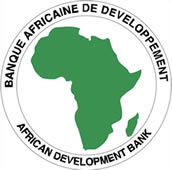 Private Enterprise Federation
Advocacy, Business Development and Market Access
Private Enterprise Federation
Advocacy, Business Development and Market Access
Advocacy, Business Development and Market Access
Private Enterprise Federation ICT Platform
The health industry comprises all firms directly involved in the production and promotion of health care. These include all firms (both public and private) operating in the health market and are involved in the manufacturing of health products, provision of health care, health enhancing services and generation of knowledge in support of health.
The health industry as a new concept has not been recognized and analyzed. The capacity of the local manufacturing industry is under-utilized and the potential of Ghana’s herbal and traditional medicines is largely untapped.The role of this industry in wealth creation is in sustaining health services and creating jobs.
The country may be classified into three main agriculture zones. The forest vegetation zone: consists of parts of Western, Eastern, Ashanti, Brong-Ahafo and Volta Regions. The northern savannah vegetation zone: The Upper East, Upper West and Northern Region; the coastal savannah: includes the Central, Greater Accra and parts of Volta Region. The northern savannah zone is the largest agriculture zone. Most of the nation’s supply of rice, millet, sorghum, yam, tomatoes, cattle, sheep, goats and cotton are grown in the region.
Ghana has been undergoing a process of financial sector restructuring and transformation as an integral part of its Vision 2015 strategy. Prior to 2003, the Bank of Ghana, Ghana’s Central Bank, operated a three-pillar banking model with all banks licensed as either development, merchant and commercial banking. In February 2003, the Bank of Ghana introduced Universal Banking which allowed the banks to undertake commercial, development, merchant or investment banking without requiring separate licenses. This has levelled the playing field, and opened up the banking system to competition, product innovation and entry.
Agriculture has long been an important sector of the economy, employing about 50 percent of the labour force. At the end of 2014, the sector contributed an estimated 19.9 percent to the country’s GDP (Ghana Statistical Service). Cocoa is the major export crop, followed by timber and non-traditional products such as horticulture, fish/sea foods and pineapple. The Agriculture sector continued its trend of increasing growth, growing at 5.3 percent in 2014 compared with 5.2 percent in 2013 and 2.3 percent in 2012. This was mainly on account of growth in the Crop, Livestock sub sector and the Fishing sub sector. In addition, the recent investments made in the development of the Agricultural Industry bodes well for sustained growth in the Industry.
Ghana is endowed with substantial mineral resources and has a well-established mining sector, which has grown considerably in recent years to represent an important pillar of the Ghanaian economy.
The minerals extractive industry currently has thirteen large-scale mining companies and, over three hundred registered small scale mining groups and ninety mine support service companies.


































